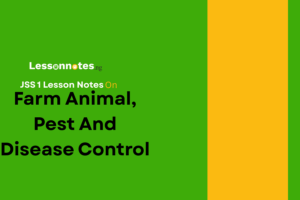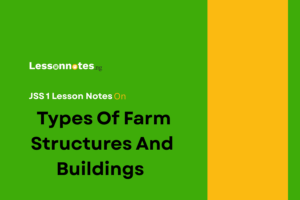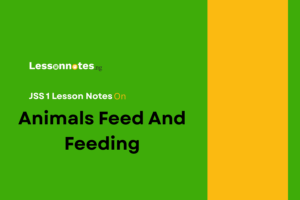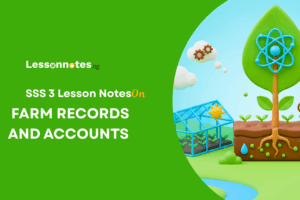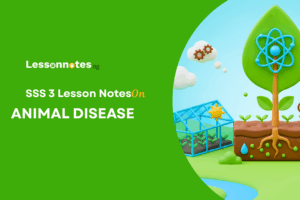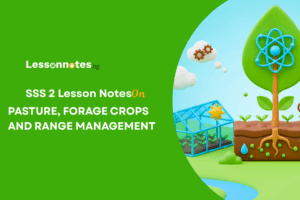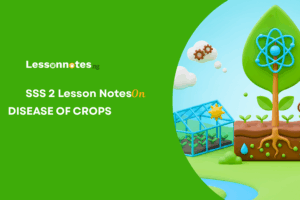Pest Of Crops SS2 Agricultural Science Lesson Note
Download Lesson NoteTopic: Pest Of Crops
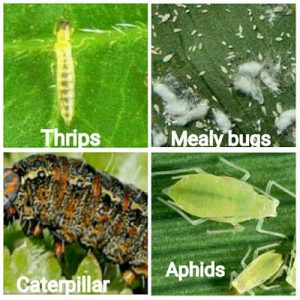
MEANING OF CROP PEST
A crop pest can be defined as any organism capable of causing damage to the crop.
TYPES OF CROP PEST
Important crop pests are grouped into the following classes;
- Insects
- Birds
- Rodents
- Monkeys
- Man
- Nematodes
CLASSIFICATION OF INSECT PEST
- Biting and Chewing Insects: They possess strong mandible and maxilla (mouth parts) which enable them to bite and chew plant parts e.g. termites, grasshoppers, leafworms, mantids, locusts and beetles.
- Piercing and Sucking Insects: They possess strong mouthparts called proboscis which enable them to pierce through plants and suck liquid materials from them. Examples are aphids, cotton strainers, mealy bugs, scale insects, capsids, mirids and white flies.
- Burrowing Insects: They and their larva stage are capable of burrowing the tissue of the plant parts or fruits or seeds. Examples are bean beetles, stem borers, maize weevils and rice weevils.
IMPORTANT PESTS OF MAJOR CROPS
| SN | PESTS | CROPS ATTACKED | NATURE OF DAMAGES | PREVENTION |
| 1 | Stem burrower | Cereals e.g. rice, maize, guinea corn. | i. Larvae bore holes into stems
ii. They eat up the tissues iii. They weaken the plant iv. Uproot and burn infected plant v. Spray with insecticides e.g. Gammalin 20
vi. Reduced growth and yield |
i. Early planting
ii. Crop rotation |
| 2 | Army Worm | Cereals e.g. maize | i. Larvae invade and eat up leaves and stem
ii. Reduce photosynthesis iii. Retarded growth iv. Reduced yield |
i. Hand-picking
ii. Spray with insecticides. E.g. DDT |
| 3 | Pod burrower | Legumes e.g. cowpea, soybeans | i. Larvae bore into the pod
ii. They eat up the seeds iii. Reduced yield |
i. Crop rotation
ii. Early harvesting iii. Spray with insecticides iv. Introducing diseases. |
| 4 | Aphids | Legumes e.g. cowpea, soybeans | i. Stunted growth
ii. Galls on leaves iii. Vectors of disease e.g. rosette, mosaic disease of cowpea |
i. Spray with insecticides to kill vector
ii. Uproot and burn infected plant |
| 5 | Leaf beetle | Legumes e.g. cowpea, soybeans | i. They eat up the leaves
ii. Reduce photosynthesis iii. Reduced yield |
i. Spray with insecticides
ii. Use pest-resistant varieties. |
| 6 | Cocoa mirids | Beverages e.g. Cocoa | i. They inject toxic saliva into the plant
ii. Transmits fungal diseases iii. Reduced yield iv. Stunted growth |
i. Spray with insecticides e.g. Gammalin 20
ii. Regular Weeding |
| 7 | Yam beetles | Tubers e.g yam | i. Boreholes into yam tubers
ii. Reduced yield iii. Reduction in quality and market value |
i. Dust yam setts with Adrin dust before planting
ii. Crop rotation |
| 8 | Cassava Mealybugs | Tubers e.g cassava | i. Twisting of stem and reduced internodes
ii. Swelling of shoots iii. Reduced yield |
i. Early planting
ii. Use pest-resistant varieties. iii. Cutting treatment iv. Spray with insecticides |
| 9 | Green spider mite | Tubers e.g cassava | i. They feed on the leaves
ii. Reduce the rate of photosynthesis iii. Reduced yield |
i. Use biological control
ii. Spray with insecticides |
| 10 | Variegated grasshopper | Tubers e.g Cassava, yam | i. Adults and larvae eat up the leaves and stem
ii. Reduce the rate of photosynthesis iii. Reduced growth iv. Reduced yield |
i. Hand-picking
ii. Spray with insecticides e.g. Adrex 40 |
| 11 | Cotton stainer | Cotton | i. They pierce and suck sap from plants
ii. Produce toxic saliva iii. Transmit diseases iv. Reduce the quality of boll v Leaf distortion |
i. Hand-picking
ii. Spray with insecticides |
| 12 | Cotton bollworm | Cotton | i. Larvae feed on the seeds of cotton
ii. Crop rotation iii. Destroy the lint and reduce its quality iv. Premature fall of cotton boll |
i. Spray with insecticides to kill insects
ii. Burn cotton plant debris after harvesting. |
ECONOMIC IMPORTANCE OF INSECT PESTS IN CROP PRODUCTION
- They destroy crops in the fields through their biting, chewing, boring, sucking and defoliation activities.
- They cause a reduction in the viability of stored produce.
- Spot injuries by insect pests predispose crops to pathogen attack.
- They increase the cost of production as they are being controlled.
- They render vegetables and fruits unattractive and unmarketable.
- Some are vectors of disease.
- The profits of farmers are reduced.
- They reduce the quality of produce either in the store or in the field.
- They generally reduce the yield of crops.
- They can also cause the total death of crop plants.
METHODS OF PEST CONTROL
Crop pests can be prevented or controlled through the following methods:
- Physical control
- Cultural control
- Biological control
- Chemical control
Physical Control
This involves the physical removal of pests by:
- Hand-picking of insects and larvae
- Setting traps to catch rodents
- Shooting rodents with a gun
- Fencing around the farm with wire nets.
- Use of scarecrows.
- Cultural Control
This method involves the use of farm practices to prevent or control pests, examples of cultural control are:
- Practicing crop rotation
- Use of pest-resistant varieties of crops
- Appropriate tillage operations
- Burning crop residues
- Timely planting of crops
- Proper weeding or sanitation
- Timely harvesting
- Close season practices (no living plant is allowed for a certain period).
- Biological Control
This involves the introduction of natural enemies of pests to control or keep the pest population under control. Such enemies eat up or feed on these pests, thereby reducing the population of the pests.
- Chemical Control
This involves the use of chemicals called pesticides to control pests of crop plants. Examples of pesticides are insecticides, rodenticides, avicides etc.
Examples of chemicals used to control pests are:
- Insecticides: for controlling insect pests e.g grasshopper
- Rodenticides: chemical control for rodents such as rats
- Avicides: for controlling bird pest
- Nematicides: a chemical used to control nematodes. E.g worms
FORMS OR GROUPS OF INSECTICIDES
The four groups and the mode of action are:
| SN | GROUP | MODE OF ACTION |
| 1 | Powder | Contact |
| 2 | Liquid | Systemic |
| 3 | Granules | Stomach (Ingestion) |
| 4 | Gas | Fumigation |
SIDE EFFECTS OF THE VARIOUS PREVENTIVE AND CONTROL METHOD OF DISEASE AND PEST OF CROPS
The use of these control methods have their effect, these effects include:
- Death of some beneficial insect and soil organism, toxic exposure to animals and man, chemical residue in the environment, washing away of chemicals into aquatic life e.t.c when chemical control method is employed.
- Organisms introduced may attack cultivated crops or stored grains, predators might not feed on targeted pests and deviate to feeding on beneficial organisms, and the activities of new organisms might cause an ecosystem imbalance when a biological control method is employed.
- When a cultural control method is employed, the use of the bush burning method might get out of hand thereby destroying soil structure, spreading to other farms, loss of organic matter and leading to the death of beneficial microbes.


